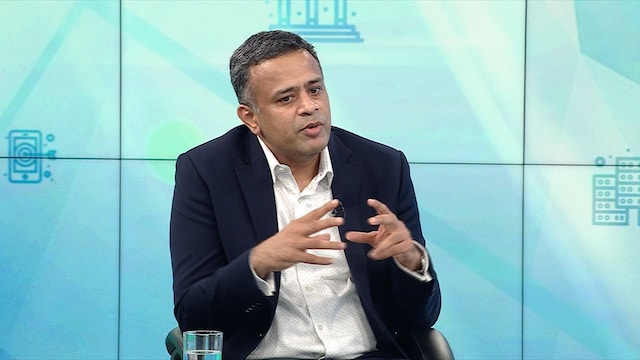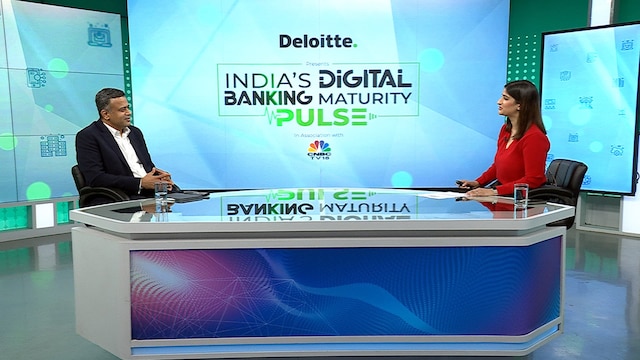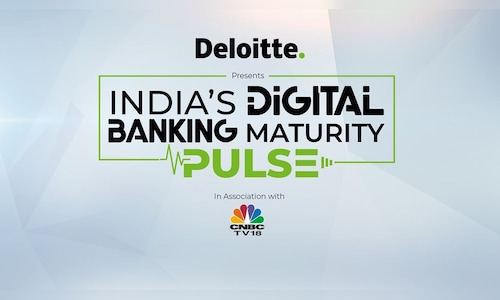The 2025 edition of the survey, which evaluated 349 banks across 44 markets, highlights a stunning surge in India’s Digital Banking Maturity Index, which grew from 43% in 2022 to 59% in 2025. It also revealed that Indian Digital Champions outperformed their global peers across most journey steps and scored significantly higher in information gathering, customer on-boarding, day-to-day banking and overall user experience.
Driving the digital leap
In a special edition — Deloitte Presents: India’s Digital Banking Maturity Pulse— in association with CNBC TV18, Vijay Mani, Partner and Banking & Capital Markets Leader, Deloitte India, shared his insights on what’s driving India’s digital banking success and related themes.

Giving credit for this success to the influence of fintechs and the rising bar for customer experience, he said, “The fintech ecosystem in India has exposed customers to high-quality digital experiences, raising their expectations and pushing banks to elevate their services.” Explaining that if someone has a great experience on a quick-commerce app, they expect their banking app to work just as smoothly, he noted, “This has forced banks to step up. Together, these two factors have driven greater investment and innovation from Indian banks.”
Room for improvement
Mani also discussed areas where Indian banks lag behind their global counterparts. Chief among these is customer support. Even among India’s digital champions, the average customer support maturity score is just 51%, compared to 67% for global champions.
Another area is ecosystem integration and aggregation, which also ties into personal finance management and investment services. “Global digital champions have done a much better job of aggregating financial information for users,” Mani remarked. “This allows them to offer value-added services—like investment advice and tools—in a more seamless and effective manner.” While India does have a foundation for ecosystem-led banking, he pointed out that adoption is still limited and more investment is needed to make the system scalable and robust.

Leading the charge
On the flipside, there are some Indian banking achievements that provide paradigms for global peers. India’s digital payments system and UPI, in particular, has been a real success story. “It has already expanded to about seven countries, and even developed markets can benefit from adopting or integrating similar systems,” Mani observed.
Another area in which India has demonstrated significant innovation is embedded finance. Embedded payments are becoming common across different digital touch-points. “Globally, banks can look to India for inspiration on how a growing share of transactions is now originating outside of traditional banking apps or websites,” considered Vijay, stating that immense innovation is taking place at the ecosystem level, which can be replicated or adapted.
AI and hyper-personalisation
The conversation also turned to AI adoption, particularly with the rise of generative AI. While Indian banks have made cautious but smart inroads, largely starting with internal efficiencies, Vijay sees tremendous untapped opportunity. “One area where AI can create significant impact is in combating financial crime—detecting fraud and money laundering in a proactive manner,” he said, also pointing to global use cases where AI is being leveraged to recommend tailored products, predict customer behaviour, and suggest next-best actions.
The next frontier
With younger generations entering the workforce and managing their own finances, banks will have to think beyond traditional platforms. “Smartphone penetration isn’t the issue,” Vijay clarifies, “but comfort with financial transactions is still a concern, especially in non-urban India.” Generational shifts will gradually change this, but banks must be ready.
In urban India, he affirmed, “Teenagers and young adults are using platforms many of us have never heard of. If banks want to serve this audience, they need to meet them where they are.” This includes integrating banking services into gaming platforms, social networks, and other digital ecosystems popular with younger users.
Towards greater heights
As India’s digital banking story continues to unfold, Vijay concluded, “Indian banks have made significant strides but to be in the top five globally, they must continue to innovate—particularly in customer support, financial management, and hyper-personalisation.”
All in all, what emerged was that Indian banks have made impressive strides since the last edition of Deloitte’s Global Digital Banking Maturity survey. With the right investments and innovation, more Indian banks could find their way to a ranking on the global leader-board.

